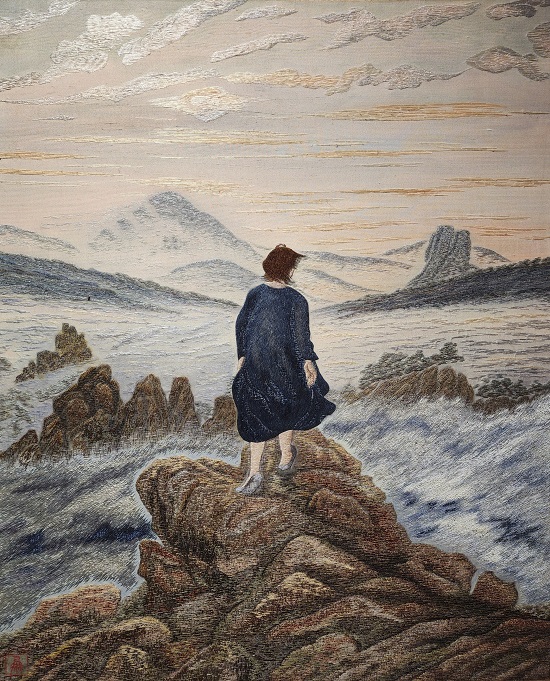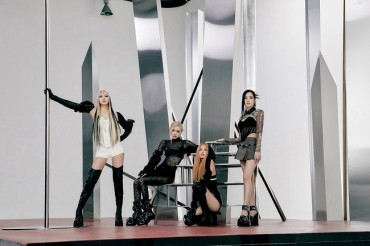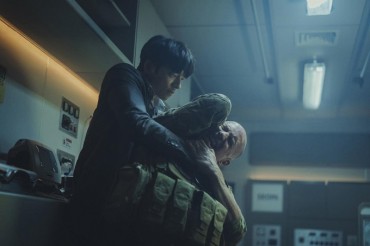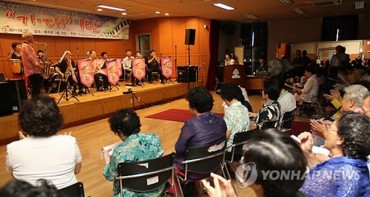
A poster for the exhibition, “Korean Embroidery in Modern Times: The Birds Trying to Catch the Sun,” is shown in this image provided by the National Museum of Modern and Contemporary Art in Seoul on April 30, 2024. (Yonhap)
SEOUL, April 30 (Korea Bizwire) –A middle-aged woman stands on a rocky mountaintop, gazing out at layers of mist-covered, rugged peaks stretching before her.
This scene is captured in the self-portrait, “Waves,” by Korean embroidery artisan Lee Jang-bong (1917-2016), who borrowed the background from “The Sea of Fog,” an oil painting by German artist Caspar David Friedrich.
Lee’s life and work are included in the upcoming exhibition, “Korean Embroidery in Modern Times: The Birds Trying to Catch the Sun,” by the National Museum of Modern and Contemporary Art (MMCA). The exhibition aims to highlight a “multifaceted view of Korean embroidery’s modern and contemporary history,” the museum said Tuesday.
The embroidery portrays Lee reflecting on her past roles as a daughter, mother and embroidery artisan. By presenting her back to the audience, it suggests her — and similarly her fellow female artisans’ — enduring dedication and struggle in a field that was frequently disregarded.
The MMCA has curated around 220 pieces, including archival materials, spanning from the late 19th century to the present day, showcasing the works of Korea’s embroidery masters. The museum noted the challenge in collecting these pieces, as many of them have become worn out or are in poor condition for exhibition.

A woman examines an embroidered artwork featured in the exhibition, “Korean Embroidery in Modern Times: The Birds Trying to Catch the Sun,” at the Deoksugung branch of the National Museum of Modern and Contemporary Art in Seoul on April 30, 2024. (Yonhap)
Once considered merely a pastime, embroidery gained recognition as a serious pursuit when Ewha Womans University in Seoul established the country’s first embroidery department in 1945, following liberation from Japanese colonial rule.
Born in Kaesong, North Korea, Kim Hye-kyung (1928-2006) learned embroidery from her mother. She later graduated from the department and went on to earn her master’s degree at the same university.
Kim started her teaching job there in 1960 and wrote numerous books on embroidery, expressing regret over the lack of systemization and organization in the field due to the common belief that “any woman should know how to embroider.”
One of her works is prominently featured in the exhibition, depicting a woman in traditional hanbok attire sitting in front of a fireplace, with a book on her knee and one hand near the fire to warm herself up.
The work, titled “Silent Night,” vividly captures the warmth and light emitting from the fireplace onto the woman’s face, as well as the shadows and wrinkles on her dress. The MMCA highlighted the subject’s novelty in the field, emphasizing its color gradation and intricate details.
MMCA Director Kim Sung-hee expressed her admiration for the artists showcased in the exhibition, likening their dedication to “birds trying to catch the Sun,” a reference to the exhibition’s title.

“Wave” by Lee Jang-bong is shown in this photo taken on April 30, 2024, at the Deoksugung branch of the National Museum of Modern and Contemporary Art in Seoul. (Yonhap)
“You’ll connect with me when you experience the exhibition,” she said.
The exhibition will open Thursday and run until August 4 at MMCA’s Deoksugung branch in central Seoul.
(Yonhap)






